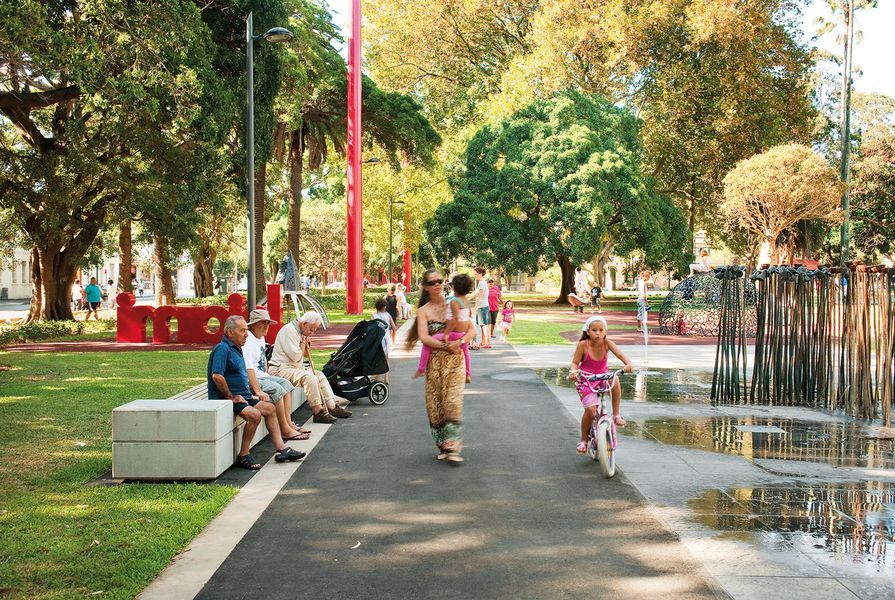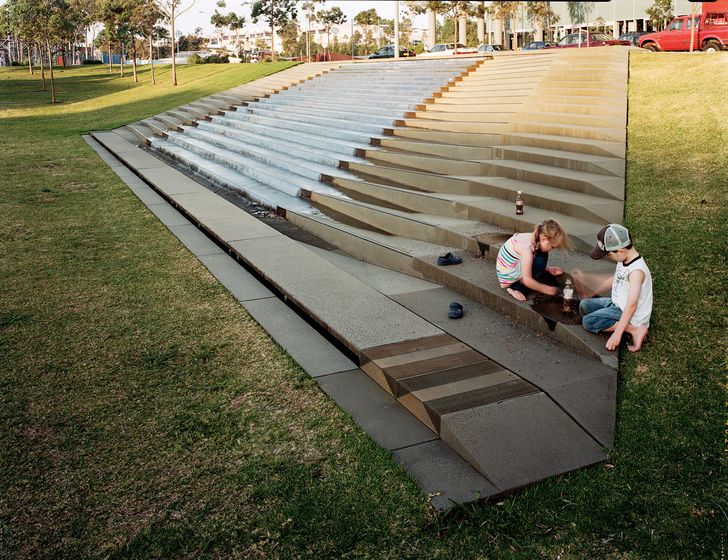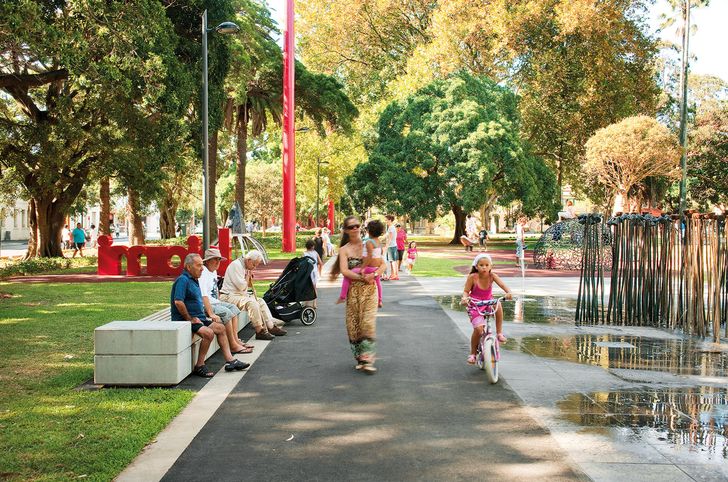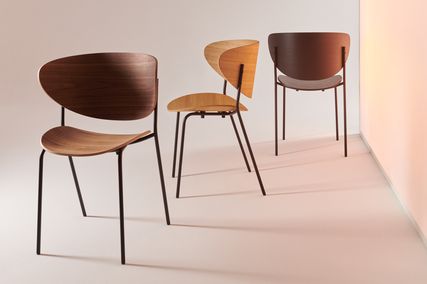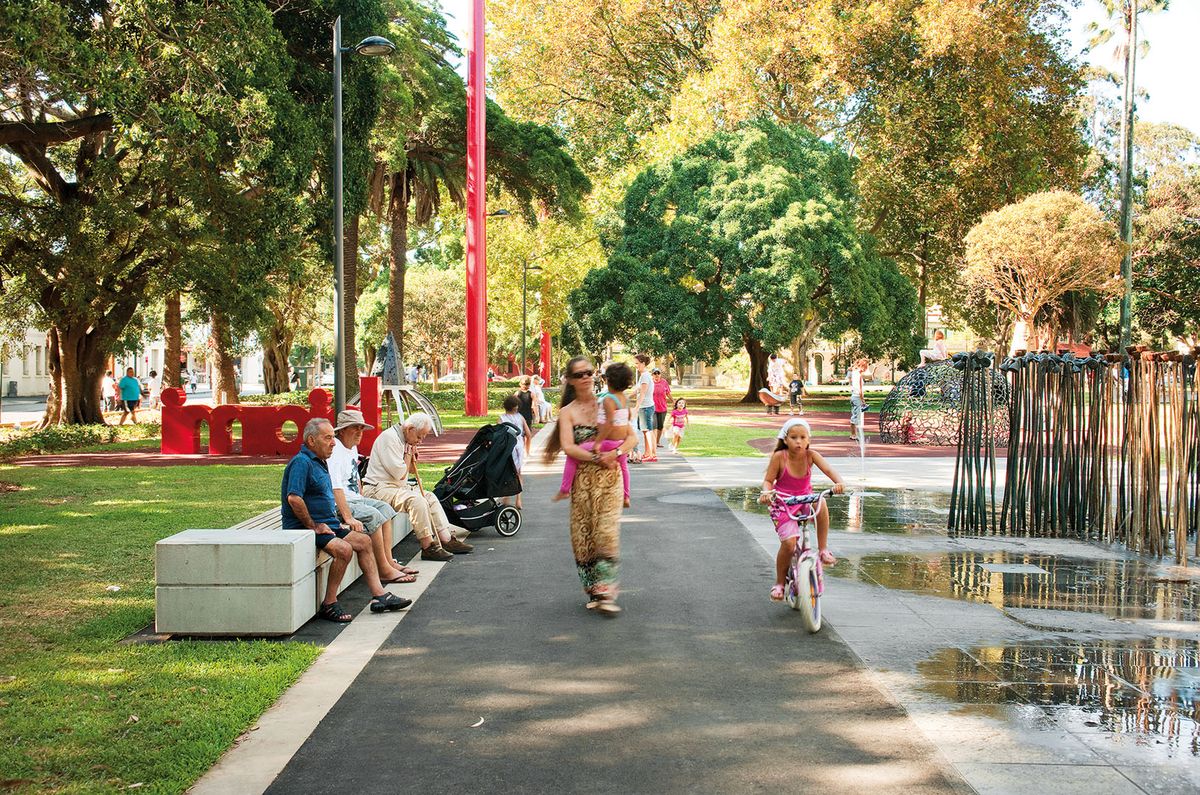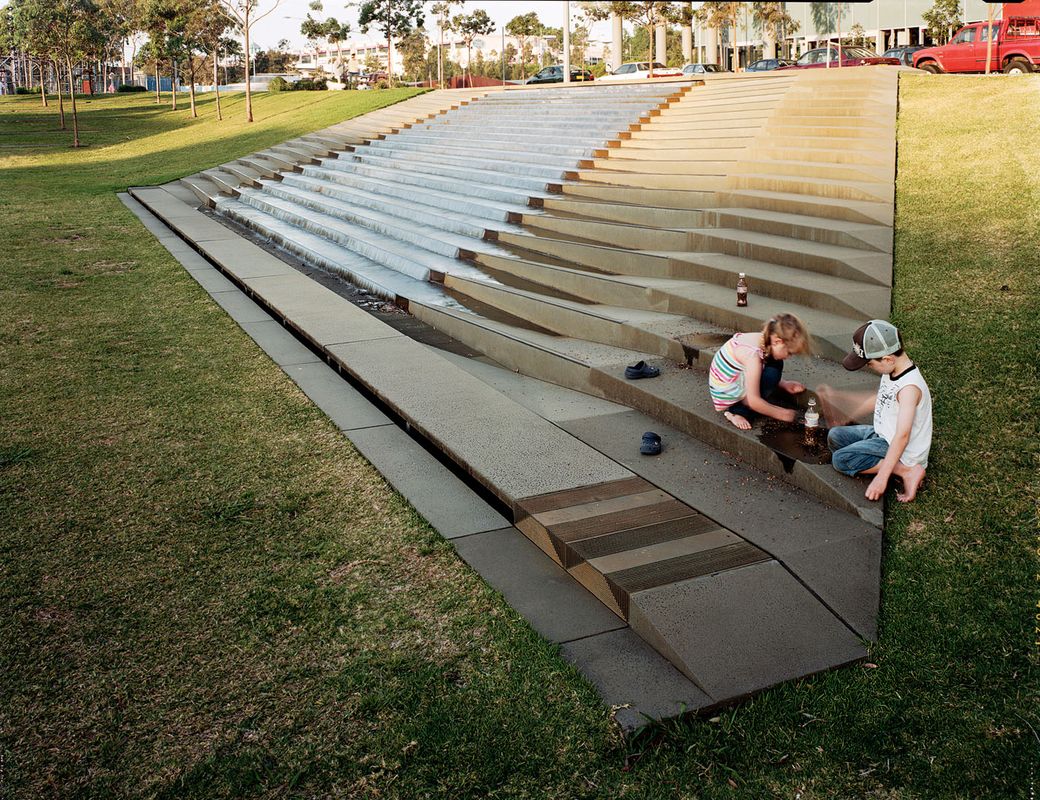Children compel us to think about our collective future. They provide us with a powerful reason to expand our sustainable values and design ethics to include a double vision: to meet children’s needs today (as they are the adults of tomorrow), and to meet future generations of children’s needs (as they will “inherit the Earth” we leave them).
To commit to both visions is to invest wisely in a caring legacy in social capital and in sustainable outcomes for everyone. Sustainability is more than designing with thoughtfulness about recycling, or cradle-to-grave analysis of products – it also asks the question: What creates social sustainability? And how would we, as adults, know?
Public spaces have always been a measure of what a caring society offers to its citizens. In the last twenty years the place of children in this debate has shifted in response to the United Nations Convention on the Rights of the Child (1989), to reflect a new understanding of children and young people, as social citizens – not only as dependents needing care and protection. In this conceptualization, children are recognized as having rights to participation in decisions that affect their lives, and thereby are socially valued, heard and respected in the processes of creating the built environment.1
That children and young people have a voice in the development of the public realm is important because this shared space provides a setting for one of the defining aspects of childhood: it is where children play. Central to a child’s healthy development and wellbeing, play in the public realm can be defined as “activities which children choose to undertake when not being told what to do by others” 2 and can be prescribed or open-ended. The best possible opportunities should be available to children and young people to kindle resilience and to encourage and support active, engaged participation in a future of challenge and dynamic change. The ability of the environment to be adapted to suit children’s needs, in turn, helps shape and support their quality of life.
Victoria Park in Zetland, Sydney by Hassell in collaboration with the Government Architects Office of NSW and artists Turpin Crawford Studio.
Image: Max Creasy
Creating public spaces for children and young people is about quality provision, rather than the quantifying of available space in accordance with planning processes and government strategies. Quality has many dimensions, but is rarely assured through the traditional process of manufacturer-led design of playgrounds. Nor is it guaranteed when a layer of art is applied to children’s environments. There also appears to be increasing confusion with the concept of “play value”, where the quantity of play items on offer is often seen as synonymous with quality play environment provision. These approaches only satisfy a false economy of affordability (rather than embodying a vision for society) and do not manage to guarantee quality outcomes that meet children’s needs.
Quality outcomes are forged when a range of professionals, children and young people work together in an informed, empowered and collaborative manner. As Kate Bishop reminds us, “Children and young people have critical and unique perspectives on their lives which adults do not have, and cannot do without,” and “Designers need to be mindful as to how their own beliefs and values, as well as broader social and cultural attitudes, are shaping their design … and be continually reflexive.” 3 How can you know enough about modern childhood to design for it? As adults can never fully participate in children’s social worlds, when creating outcomes especially for children, it is best practice to work together in participatory design processes. As Oscar Wilde put it: “We will never be young enough to know everything!” In June 2009, the NSW Commission for Children and Young People published “Built for Kids, a good practice guide for creating child friendly built environments.” This guide provides current information on how to incorporate children and young people in participatory processes of design and planning.
Two new concepts of great interest to the provision of play in the public realm in Australia have recently emerged from the UK: children’s spatial rights, and the concept of playable space. Children’s spatial rights embody the importance of the public realm as a legitimate place for children and young people’s informal recreation. The phrase “playable space” asserts that play should be “possible across the entire public realm (not just playgrounds) and involve all generations (not just children).” Public spaces that encourage adaptive, interactive, creative, and spontaneous behaviour will be increasingly valued by contemporary societies and these qualities will be actively valued for a more sustainable society.4
There are wider benefits that radiate from exemplary playable spaces: a space that supports the wellbeing of children and young people will often be nourishing for everyone, and becomes a shared resource for communities to draw on.
The inclusive benefits of public spaces designed with children in mind often embrace:
- Places to forge the confidence of interaction between citizens and governance.
- Places where all cultures and ages informally and spontaneously merge together.
- Places that create a sense of bonding, connectedness and trust between people, in what Doreen Massey calls the “thrown togetherness” of urban life.5
- Places where laughter and exhilaration, as well as the pain of life’s small challenges, are openly experienced by everyone present and the idea of collective experience is forged.
- Places we identify with, feel an affection for and feel we belong to.
- Places where new experiences and challenges are willingly embarked on, and when these are mastered, there is a sense of joy and achievement.
So what are some best practice principles of quality playable space provision?
- Involve children and young people in participatory design processes. Harness their expertise, insights, optimism and immediacy.
- Provide absorbing, open-ended challenging activities for children to engage with.
- Create a sense of welcome and comfort by designing for contentment.
- Foster social connectedness where people are drawn together in the experience of living.
- Design for richness of environment. Create diverse spaces, use rich sensory materials and provide a sense of containment.
- Include, choose or create a setting of beauty and naturalness.
- Incorporate a sense of delight.
A playground by artist Fiona Foley and Urban Art Projects within the Redfern Park Upgrade by Spackman Mossop Michaels with BVN and the City of Sydney.
Image: John Gollings
We must continually reflect on the place of children and young people in the public domain and strive to update our knowledge – only then shall we be able to slough off the stale paradigm that adults know best for children.6 We need to think about a future for children, and to continually imagine what it could be – in doing so, we will be forging the future of more sustainable cities.
So imagine our future and create it now, for in the words of an ancient Indian proverb, “We do not inherit the Earth from our ancestors, we borrow it from our children.”
1 M. Lloyd-Smith and J. Tarr, “Researching children’s perspectives: a sociological dimension,” in Researching Children’s Perspectives, eds A. Lewis and G. Lindsay, (Buckingham: Open University Press, 2000).
2 Issy Cole-Hamilton, Andrew Harrop and Cathy Street, “The Value of Children’s Play and Play Provision: A systematic review of the literature,” New Policy Institute, www.npi.org.uk/reports/play%20literature.pdf, 2002.
3 K. G. Bishop, “From their perspectives: Children and young people’s experience of a paediatric hospital environment and its relationship to their feeling of wellbeing,” (Sydney: The University of Sydney, 2008).
4 J. Beuderman, C. Hannon, P. Bradwell, “Seen and Heard: Reclaiming the public realm with children and young people.” 2007.
5 Doreen Massey, For Space, (London: Sage, 2005).
6 M. E. Graue and D. J. Walsh, Studying children in context: Theories, methods, and ethics, (Thousand Oaks: Sage, 1998).
Source
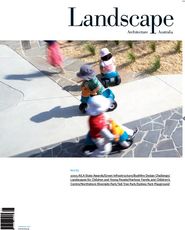
Discussion
Published online: 1 Feb 2010
Words:
Fiona Robbé
Images:
John Gollings,
Max Creasy
Issue
Landscape Architecture Australia, February 2010

